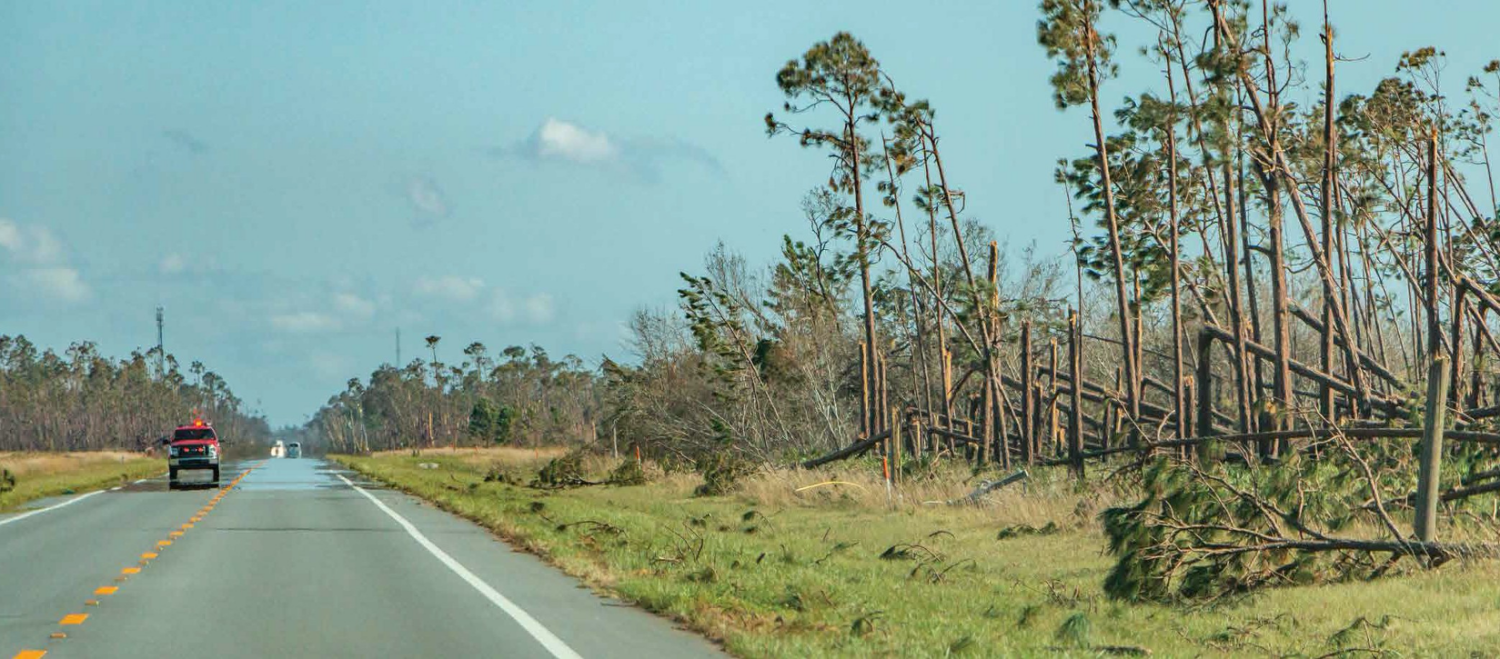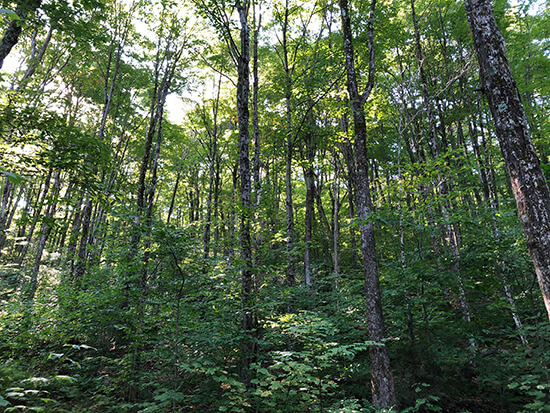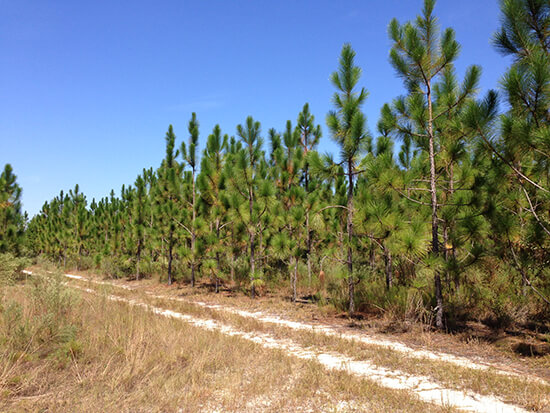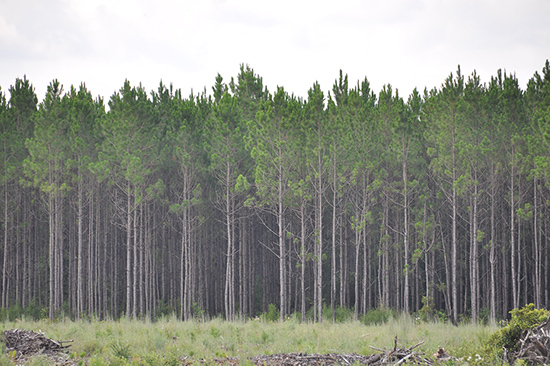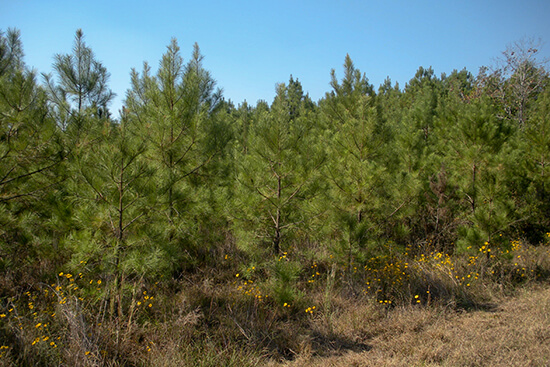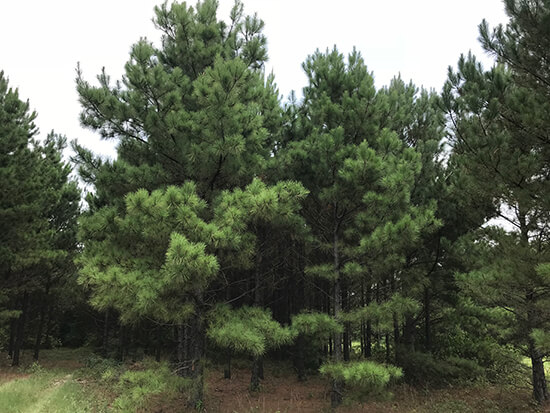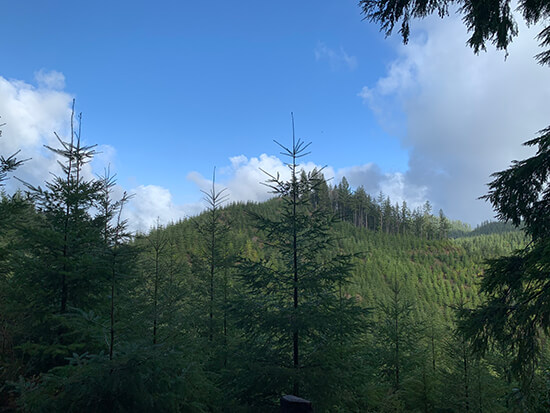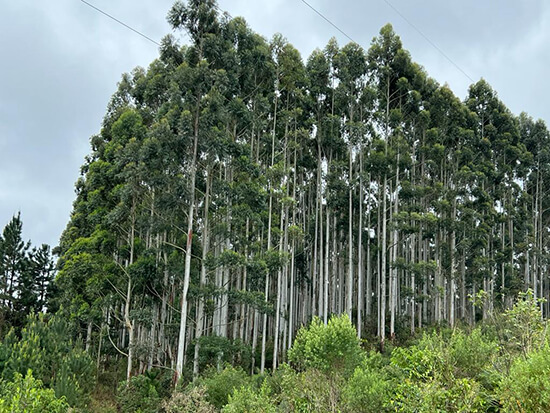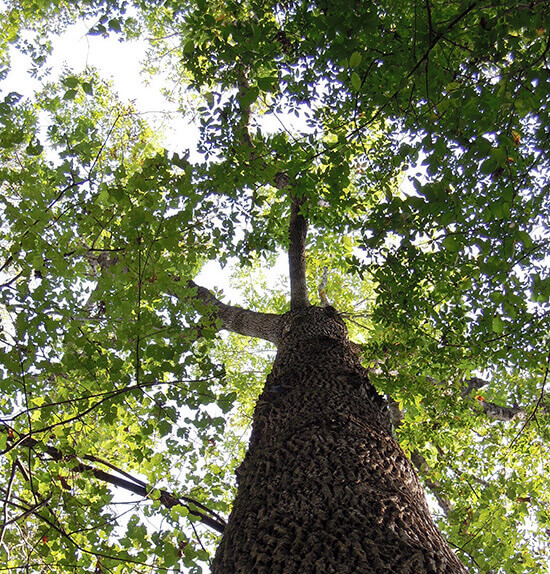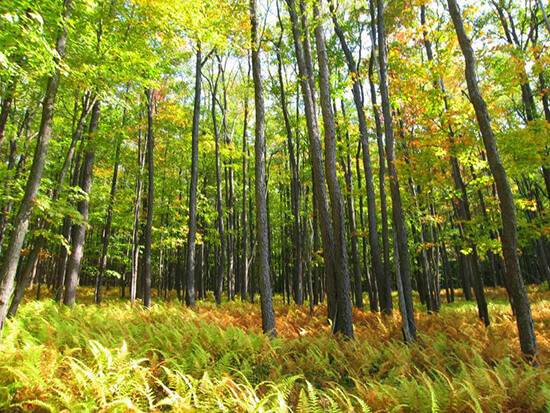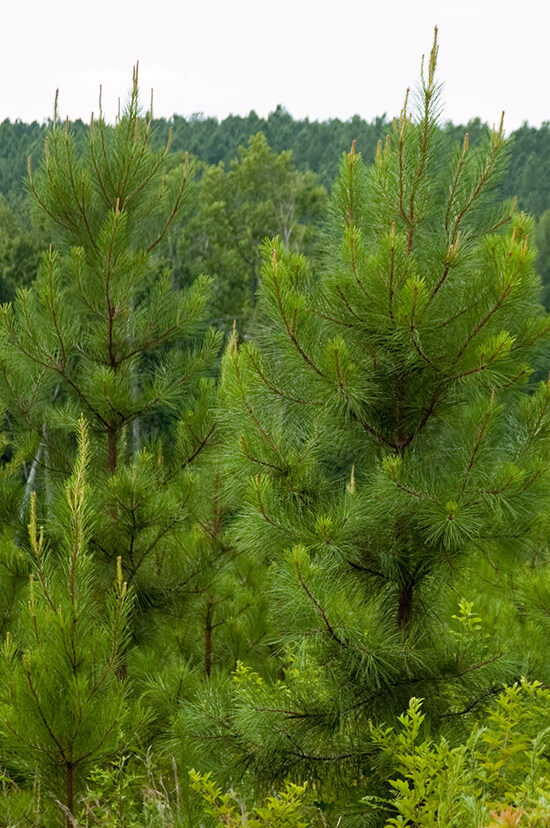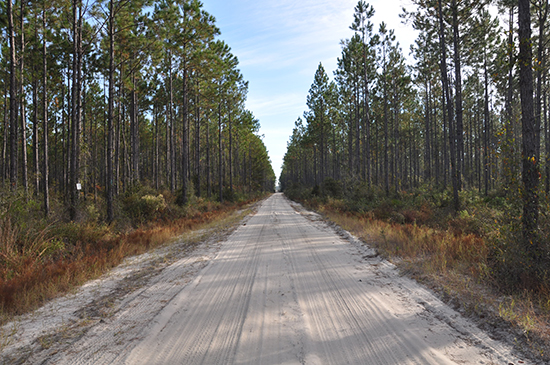An in-depth look at how a team of forestry professionals helped salvage a Florida forest and position it for the future following the devastation of Hurricane Michael.
BY MIKE CLUTTER AND FRANK CORLEY
Hurricanes can inflict substantial damage to forests that have taken decades to nurture and develop. Whether the landowner’s objectives are financial, aesthetic, recreational, or some combination, a Category 4 or 5 hurricane can inflict irreparable harm.
Hurricane Michael battered Florida and Georgia in October 2018, the worst hurricane to hit in more than 25 years. In this article, we’ll review the damage and recovery of a 98,000- acre forest hammered by Michael just northeast of Panama City, Florida. This forest is a contiguous block located 20 miles inland from Mexico Beach, where Michael came ashore.
There have been only five recorded Category 5 hurricanes to make landfall in the Southeast: San Felipe II (1928), The Labor Day Hurricane (1935), Camille (1969), Andrew (1992), and Michael (2018). These storms, along with a larger number of Category 4 hurricanes, have impacted many areas of the Southeast including forests.
Until Michael, Hurricane Hugo (1989) dealt the largest blow to forests, mostly in South Carolina, and ranked as the costliest hurricane in U.S. history until Andrew struck South Florida. Estimates of forest losses associated with Michael are in the $2.5 billion to $3 billion range in Florida, Alabama, and Georgia.
Michael was a fast-moving storm that inflected damage through sustained winds of 160 mph at landfall. While some flooding was associated with the storm surge around Panama City, Michael sustained hurricane-force winds for more than 150 miles, inland into southwest Georgia. The behavior of Michael was unique in that it was a Category 2 storm 36 hours before landfall and quickly strengthened to a Category 5 hurricane. The accompanying maps depict the track of the storm through Bear Creek Forest and through the Gulf Coast.
Forest Investment Associates (FIA) is a Timberland Investment Management Organization (TIMO) that started investing in timberland on behalf of its clients 33 years ago. Our firm now manages $4.8 billion of timberland assets in North and South America. We started in the southeastern United States and this region still represents our single largest area of timberland investment. FIA manages more than 1.7 million acres in the Southeast with about 37 percent of those acres being within 60 miles of the Atlantic or Gulf coasts.

Hurricanes, though unusual, can inflict severe damage to forestlands.
Our firm has experienced the impact of many hurricanes. Hugo, Ivan (2004), Katrina (2005), and several others have impacted timberland that we manage. Those storms resulted in minimal damage to our timberland properties such as blow down and broken stems, increased road maintenance from heavy rains, etc. However, the damage on Bear Creek from Michael was unlike anything ever experienced on our properties.
A couple of days after the storm FIA personnel surveyed the damage of Bear Creek via helicopter, where it became apparent that the forest had sustained a catastrophic hit. The eye of Michael tracked right through the middle of the forest. With the help of American Forest Management (our field service provider in this area) and the Florida Forest Service, it took almost a month to reopen the primary woods roads on Bear Creek.
Some salvage was started immediately, but with the Westrock pulp mill in Panama City down due to storm damage markets were quickly flooded with salvage wood and prices dropped to low levels, typical after storm events. Like Hurricane Hugo salvage efforts, most of the timber on Bear Creek was so broken and “jack-strawed” that most areas were unsalvageable as well as unsafe for conventional logging equipment.
Most stems were broken off between 6 and 20 feet and younger plantations (ages 2 to 10) were blown over and lying on the ground. Many of the 3 and 4-year-old plantations did straighten over the course of the first month after the storm. The most sobering sights, however, were the older merchant- able plantations that were destroyed. The magnitude of the silvicultural challenge became apparent.
All the timber in a huge area needed salvage after Michael and the clock on its viability was ticking. Whose timber gets salvaged first or salvaged at all? The three primary costs in timber harvesting are tree size, haul distance, and ground conditions.
Modern logging equipment common to the Southeast quickly creates bunches of small trees to mimic the cost of harvesting larger trees, but this was not possible with the broken jack-strawed trees after Michael. So owners with larger, older, and less intensely managed stands were able to get more wood salvaged than owners with younger intensely managed shorter rotation stands.
Cut to length (CTL) is a single stem harvesting method used in many parts of the world, but not common in the Southeast because of its inability to harvest small trees at low cost. CTL exploded in the area damaged by Michael with CTL loggers coming from as far as the Upper Peninsula of Michigan to help with the salvage effort.
To quickly understand the magnitude of the challenge we worked with Barrett McCall and Greg Triplett at Larson and McGowin in Mobile, Ala. Using their Silvics Solutions forest management information system, S2, we created a series of spatial layers in the system that used our stand level inventory before the storm to predict debris loads for the merchantable plantations.
In many cases these older merchantable plantations had between 150 and 200 green tons of debris per acre that had to be ad- dressed before the areas could be replanted. To make the situation even more challenging, the debris was in various states of destruction – some standing, most broken off at various heights, and some completely on the ground.
It was readily apparent that traditional mechanical site preparation techniques were not going to be effective. We crunched some initial numbers to estimate the size of windrows in a traditional shear and rake treatment and found over half of the area would be in windrows, not to mention the cost associated with moving this much debris. We needed to bring in folks with substantial forest operations and engineering experience.
Having worked for many years with Frank Corley, a for- ester and civil engineer located in Greenville, Ala., FIA invited him to look at the situation. Just as FIA officials felt when first looking at the devastation, Corley was unsure what might work from a silviculture and site preparation perspective.
We spent a week looking at different stands with varying debris loads. Corley invited site prep contractors from South Carolina with Hugo experience to come and look along with Mark Sauer, who owns Savannah Global, a forestry equipment manufacturer. All came away shocked at the level of destruc- tion and amount of debris. It became apparent that we had to find a treatment that would put all the debris on the ground and that it was prohibitively expensive to try and move the debris after it was on the ground. From discussions between Corley and Sauer, along with AFM and FIA personnel, a little known site prep technique known as “chaining” became a possible solution for dealing with the storm debris.

D8 dozers were used to deal with storm debris following Hurricane Michael.
Chaining has been used in many forestry conversion projects throughout the world but only rarely in the Southeast. A technique not know for its elegance, the treatment involves two D8 sized bulldozers and about 300 to 400 feet of ship anchor chain. The chain is attached to each dozer and swaths of approximately 100 feet are pulled over using the anchor chain. It has proven to be an effective method to put the debris in the merchantable stands on the ground.
After this treatment is applied then a D8 dozer pulling a bedding plow pushes rows through the downed debris and the beds will be hand planted. This group of mechanical site preparation treatments involves moving as little debris as possible while still creating a plantable bed for the new plantation.

A little know site prep technique know as “chaining” emerged as a solution for dealing with the storm debris.
Coming to this set of treatments was not without its own set of challenges. We rarely use tractors the size of D8s any- more in forestry applications in the South. It was difficult to find D8s with a forestry protection package that could stand up to the debris loads present in these merchantable stands. In some instances, the contractors have to first open corridors for the D8s before chaining. Safety was a substantial concern given the amount of debris.
Corley located a local contractor, Quintco, that had three D8s with forestry protection packages to support the chaining and bedding. We are still modifying the application of these treatments based upon debris load, soils, and wetness of the areas being treated. We also are employing a herbicide treatment to control hardwoods that have sprouted back vigorously since the storm – and removal of the overstory by the storm.
The other challenge was how to address the pre-merchantable plantations that had been destroyed by the storm. Most all plantations from age 5 to about age 13 were blown over or broken. All these plantations were established on beds. It was our hope initially that we could spray these stands and then hand plant the beds. However, after looking at the plantations it became clear too much debris existed to be able to plant the beds without removal of the blown over and broken stems.
It also became apparent that if possible, the removal technique needed to save the integrity of the beds to decrease site preparation costs. Corley located a logging contractor with a feller-buncher mounted on a large rubber-tired ma- chine. Leaving the accumulator arms open the feller-buncher drove down the rows severing all the stems on the bed. This removed the debris while maintaining bed integrity.
After this proof of concept, Corley, Sauer from Savan- nah Global, and Johnny Boutwell and Grant Summerville from Tigercat designed some modifications to a Tigercat feller-buncher head that further enhanced the efficiency of this technique. We purchased a used Tigercat feller-buncher head and Savannah Global modified it according to the design changes identified. This has proven to be an effective and cost-efficient technique for site preparing these pre-merchant- able plantations.
It likely will take four years to replant all the destroyed plantations on Bear Creek. We still are learning and modifying these techniques based on individual stand conditions. The other project we have instituted on the property tracks insect populations using traps. We are concerned that with all the debris in these newly planted stands that insect populations might create substantial forest health problems.
Working with Kamal Gandhi, a forest entomologist at the University of Georgia, we have designed an insect trap- ping protocol to help estimate insect populations and identify possible forest health risks. Similarly, we remain concerned about fire risk given the debris loads and are working closely with the Florida Forest Service to mitigate these risks. Having multiple D8 dozers on site to help fight fire is a plus.
The creation of a 60,000-acre plantation forest with about seven age classes also presents some future challenges from a wood flow and cash flow perspective. We expect to use a variety of no thin, one thin, and two thin forest management regimes to add additional age class diversity over the next rotation. The situation creates an interesting forest planning problem.
It is difficult to fully understand the impact Category 4 and 5 hurricanes have on forests until seeing the devastation and trying to identify cost effective methods to recover a forest. In such situations bringing in specialists with expertise in forest engineering, spatial analysis, silviculture, and forest operations is imperative. Without the help of a team of experienced professionals, we still likely would be searching for ways to address the damage from Hurricane Michael. Instead the recovery is underway.
Mike Clutter is Vice President, Director of U.S. Investments and Operations for Forest Investment Associates in Atlanta. Frank Corley is a forester and civil engineer in Greenville, Ala.
